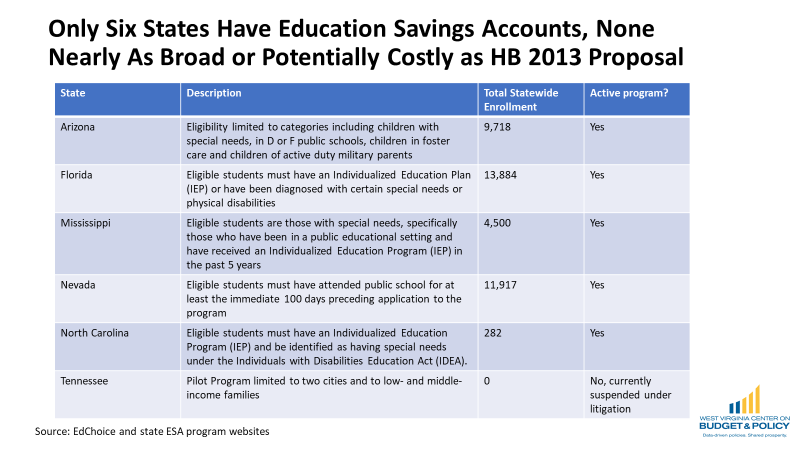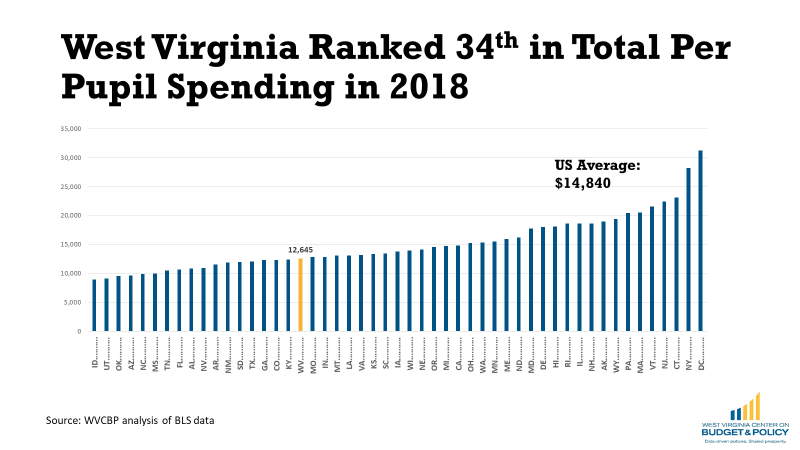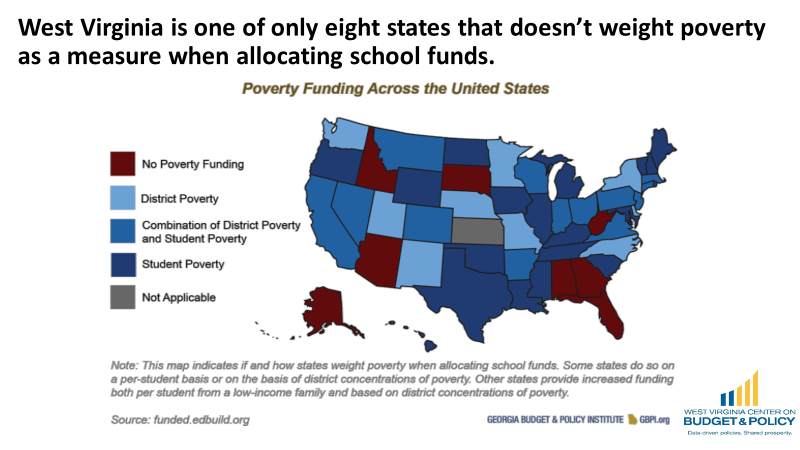This week the West Virginia House passed HB 2013, the Hope Scholarship Program. After concerns about the growing costs of the proposal, the bill was sent back to House Finance for further consideration. This is a necessary move, as the program is much broader and potentially much more costly than any similar Education Savings Account (ESA) program in the country.
ESAs divert public education funding to private and nonpublic education programs by allowing families to apply for public education dollars to be put into a bank account to pay for personal education costs including homeschooling, tutoring, or private school tuition. The Hope Scholarship, the value of which is pegged to the per pupil’s state share of public education spending, would be worth approximately $4,600 in FY 2021.
Of note, the average private school tuition in West Virginia is $6,068, meaning that there is little benefit to lower income households who don’t have $1,000 or more to make up the difference in tuition in addition to the hundreds of dollars in fees that private schools levy. Further, nine West Virginia counties do not have private schools at all, with most of the state’s private schools located in its more urban and wealthier counties, likely meaning that rural students and low-income students would be left out of the program.
Without income guidelines or enrollment caps as seen in earlier iterations of ESA bills, the costs of this program could grow quickly. This results in less public education funding for the vast majority of students who remain in the public school system. West Virginia’s legislative auditor estimated that the original bill could cost between $22 million and $33.5 million, coming out of the state’s K-12 education funding. Importantly, the auditor does note that the estimate is based on enrollment in other states with ESAs where eligibility is limited to students with special needs and, as such, the costs of West Virginia’s broad program could be much higher.
Currently, six states have ESA programs. Of the six, only five are currently in operation, as Tennessee’s program is facing legal challenges to its constitutionality. Four of the six states tightly restrict their eligibility to limited populations including children with disabilities or children of active-duty military members. Nevada has the widest eligibility, but does limit their program with household income caps to ensure that the ESAs are restricted to families who could not afford private school otherwise.

Earlier this week, an amendment was passed by the House that would further broaden eligibility to include homeschool and private school students who are not currently in public school. This increases the total potential cost of the program by over $100 million per year, given Chairman Householder’s estimate that there are approximately 22,000 new students who would become eligible. It also creates a scenario where public school dollars would be going to children who currently are not in the school aid formula — as they are outside of the public school system — resulting in direct losses of public school funding for the majority of children who remain in public schools.
West Virginia is already well below the national average in overall per pupil spending, and HB 2013 would result in even fewer resources for the students who remain in public schools.

The debate over school choice and HB 2013 ignores the most important factor in educational achievement and outcomes — socioeconomic status. When public policy initiatives do not directly address the educational challenges experienced by economically disadvantaged students, they do little to raise overall student achievement or to reduce gaps in achievement and educational attainment between advantaged and disadvantaged students.

There is much West Virginia can do to improve educational outcomes for all, rather than passing HB 2013, which advantages few at the cost of many. Increasing family economic security and ensuring fewer families live in poverty will go a long way toward increasing educational attainment. Additionally, West Virginia is one of only eight states that does not weight poverty as a factor when allocating public education funding, something lawmakers could consider to ensure that students with additional needs have the resources they require. By fully funding improvements to the resources available to public schools, lawmakers can improve opportunity for all.